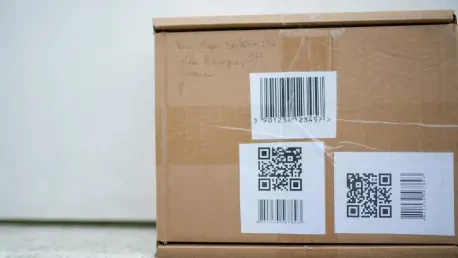In the United Kingdom, a seemingly minor issue with medicine packaging is spiraling into a major threat to public health, as barcode errors on drug packs put countless lives at risk, leading to potential catastrophic mistakes. These errors, whether due to missing information or incorrect labeling, can result in dire consequences such as dispensing the wrong medication or dosage to unsuspecting patients. The Patient Safety Commissioner for England, Henrietta Hughes, has issued a dire warning, labeling this a “life or death” matter that demands immediate attention. As the National Health Service (NHS) pushes forward with digital transformation to enhance efficiency and care, such preventable flaws in barcode systems not only jeopardize patient safety but also stall critical progress in modernizing healthcare delivery. This growing crisis has sparked concern among healthcare professionals, regulators, and safety advocates, all of whom recognize the urgent need to address these dangerous discrepancies before more harm is done.
Threats to Patient Well-Being
Barcode errors on medicine packaging represent far more than a technical oversight; they directly endanger the health and safety of patients across the UK. When a barcode is inaccurate or absent, healthcare workers face significant hurdles in confirming essential details like the drug’s identity, strength, or expiration date. This can result in grave errors, such as a patient receiving a medication they are allergic to or a dose far beyond what is safe. Henrietta Hughes has emphasized the severity of these risks, cautioning that the consequences could be fatal. Supporting this concern, the Medicines and Healthcare Regulatory Agency (MHRA) has issued several Class 4 Medicines Defect Notifications this year, highlighting packaging issues with drugs like fexofenadine hydrochloride and simvastatin. These alerts, though not critical in isolation, underscore a systemic problem that erodes confidence in the mechanisms designed to protect vulnerable individuals from harm.
The impact of these barcode failures extends beyond isolated incidents, striking at the heart of patient trust in the healthcare system. Imagine a hospital ward where nurses rely on scanning systems to verify medications at a patient’s bedside, only to find that the barcode data does not match the drug or is unreadable. Such scenarios create delays in treatment, increase the likelihood of human error, and place undue stress on already overburdened staff. The potential for tragedy is evident, as even a single mix-up can have irreversible consequences for someone in critical condition. Safety advocates argue that these risks are entirely preventable with proper standards, yet the current gaps in barcode reliability continue to expose patients to unnecessary danger. Until robust measures are in place, the fear of receiving the wrong medication will linger for many who depend on the NHS for their care.
Disruptions in Healthcare Operations
Beyond the immediate threat to patients, barcode errors inflict significant operational challenges on the NHS, hampering its ability to function efficiently. Pharmacists, such as Iain Davidson from Royal Cornwall Hospitals NHS Trust, have pointed out that without dependable barcodes, tracking medications through the supply chain becomes a logistical nightmare. This is particularly problematic during recalls, when identifying and removing defective drugs from circulation is critical. The absence of consistent barcode data slows down these processes, risking further distribution of faulty products. Such inefficiencies not only waste time and resources but also heighten the chances of errors slipping through the cracks, compounding the safety concerns already at play in busy healthcare settings.
Moreover, the lack of reliable barcodes undermines efforts to automate and integrate medicine supply systems within the NHS. Richard Bowers from Leeds Teaching Hospitals NHS Trust has noted that inconsistent or missing barcode information negates the safety benefits of digital tools designed to streamline operations. Automation relies heavily on accurate data to ensure medications are correctly dispensed and administered, but without standardized barcodes, these systems falter. This creates a frustrating barrier to the NHS’s broader goal of digital transformation, leaving staff to resort to manual checks that are both time-consuming and prone to mistakes. The operational toll of barcode errors thus reverberates through hospitals and pharmacies, stalling progress and exposing systemic weaknesses that urgently need resolution.
Regulatory Shortfalls After Brexit
A key factor contributing to the barcode crisis lies in the regulatory changes following the UK’s departure from the European Union. Previously, under the EU’s Falsified Medicines Directive, medicine packs were required to include 2D barcodes with vital information like batch numbers and expiration dates for traceability. However, this mandate no longer applies in Great Britain since the transition period ended, and in Northern Ireland following recent framework adjustments. The removal of this requirement has stripped away a crucial layer of protection, leaving significant gaps in the ability to track medications accurately. Healthcare professionals view this shift as a regrettable regression, arguing that it has heightened the risks associated with dispensing errors and complicated recall efforts.
The fallout from these regulatory changes has sparked widespread frustration among those on the front lines of healthcare delivery. Without enforced barcode standards, manufacturers are under no obligation to maintain the detailed 2D codes that once ensured accountability across the supply chain. This has led to a patchwork of practices, with some packs lacking critical data altogether. The loss of uniformity not only jeopardizes patient safety but also hinders the NHS’s push toward a fully digital ecosystem where seamless data sharing is paramount. Critics argue that the decision to abandon these requirements reflects a shortsighted approach to healthcare policy, prioritizing other concerns over the fundamental need for reliable medication tracking. The growing outcry for reinstating such standards highlights the depth of concern over this post-Brexit oversight.
Urgent Calls for Barcode Standards
Responding to the escalating risks, the healthcare community has issued a resounding demand for action to restore barcode integrity on medicine packs. This year, the UK’s four chief pharmaceutical officers released an open letter pressing manufacturers to voluntarily retain 2D barcodes, citing their undeniable benefits for safety and efficiency. Additionally, a group of 32 pharmacy professionals appealed to the MHRA to make these barcodes mandatory and integrate Global Trade Item Numbers (GTINs) into the licensing process. Such measures align with the government’s long-term vision for a digitized NHS, where accurate data underpins every aspect of care delivery. Yet, the absence of binding regulations continues to frustrate those who see standardized barcodes as a non-negotiable safeguard against preventable errors.
The push for standardization is grounded in a broader recognition that aligning with international norms, such as those set by GS1, is essential for modern healthcare systems. Proponents argue that consistent 2D barcodes would not only prevent dispensing mistakes but also enhance stock control, electronic prescribing, and recall processes. Kristy McGlynn, a digital medicines pharmacist at Manchester University NHS Foundation Trust, has highlighted how unlisted or incorrect barcodes disrupt these critical functions, creating unnecessary hurdles for staff. The consensus among healthcare workers is clear: without a unified approach to barcode implementation, the NHS risks falling behind in both safety and innovation. The urgency of this issue continues to fuel advocacy for swift regulatory intervention to protect patients and support systemic progress.
Balancing Perspectives on Resolution
While the healthcare sector largely agrees on the severity of barcode errors, opinions on the best way forward reveal a complex landscape of priorities. Safety advocates and pharmacists, driven by daily encounters with these issues, insist on immediate mandatory regulations to enforce 2D barcode use across all medicine packs. Their stance is rooted in the tangible disruptions and risks they witness, from stock mismanagement to bedside errors. The frustration is palpable as frontline workers grapple with inconsistent data that slows down care delivery and threatens patient outcomes, pushing them to demand clear, enforceable standards from authorities like the MHRA to eliminate ambiguity and ensure accountability.
In contrast, industry representatives present a more nuanced perspective, acknowledging the problem while emphasizing the steps already taken to mitigate risks. Groups like Medicines UK point to efforts in packaging design and user testing, which are vetted by the MHRA, as evidence of their commitment to safety. They also note that some manufacturers scaled back complex barcode systems after Brexit to reduce costs, particularly for low-risk generics where counterfeiting is less of a concern. Meanwhile, the MHRA adopts a measured approach, prioritizing stakeholder feedback over hasty mandates, which some see as a delay in addressing an urgent crisis. This divergence in viewpoints underscores a broader tension between the need for rapid action and the practical realities of implementation, leaving the path to resolution fraught with debate.









